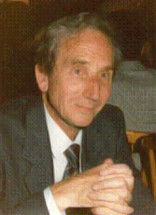
Profile
Arthur Naylor graduated from Manchester University with a BSc (honours) Chemistry in 1950, followed in 1955 by a PhD from King’s College Newcastle-on-Tyne, University of Durham. He has been a Fellow of the Royal Society of Chemistry since 1965 and is also a Chartered Chemist.
Dr Naylor joined the nuclear energy industry at Windscale (now Sellafield) Cumbria in 1954 and held senior appointments in the Research and Development Department with UKAEA and the Reprocessing Division BNFL plc from 1971. In 1982 he transferred to the Fuel Division of BNFL at Springfields as Chief Technical Manager responsible for R&D, technical services and waste management.
At Windscale/Sellafield he covered all aspects of the nuclear fuel processing cycle and initially worked on many separation techniques and processes, in particular the separation of uranium and plutonium from fission products by solvent extraction. Later he was responsible of the design and development of chemical separation processes for the large scale reprocessing plant operations from 1964 to process Magnox fuel using 20% tri-n-butyl phosphate in odourless kerosene (20%TBP/OK) in multi-stage box mixer-settlers.
He was also involved in the separation and purification of kilogram quantities of Np-237, used in thermoelectric batteries for heart pacemakers, from the transmutation of waste raffinates of Pu-238.
Prior to transfer to the Fuel Division Springfields, as Senior Group Manager and Deputy Head of R&D at Sellafield he was involved with the overall development of the proposed thermal oxide reprocessing plant (THORP). The processes used for separation and purification of U and Pu were 20% and 30% TBP/OK solvent extraction systems with sieve-plate columns and horizontal box mixer-settlers.
Early publications included a large number of papers on the mechanism, behaviour and extraction of U, Pu and various fission products, in particular Ru, Zr, Nb, Np, with TBP/OK systems. The thermal and radiolytic degradation of solvents was also studied together with the use of alternative diluents for TBP. He was joint editor of Solvent Extraction Chemistry of Metals (Proceedings 1965 Harwell conference), and contributed a number of articles to various text-books including Handbook of Solvent Extraction. In a wider nuclear technological context he acted as editor and technical co-ordinator of a series of papers and articles on nuclear energy and the nuclear fuel cycle.
Dr Naylor’s involvement with the Solvent Extraction Group of the SCI began in the early stages of the formation of the Committee and he was an active Committee member for many years. He played a major role in the organisation and running of ISEC74 in Lyon, France as Secretary of the Organising Committee and UK Working Group and member of the Editorial Committee. At the Silver Jubilee Celebration of the SCI Solvent Extraction and Ion Exchange Group in 1991 he gave a paper on the ‘Progress and Achievements of Solvent Extraction Technology over the last 25 Years’.
He retired from the nuclear industry in 1990 but continued as a consultant on the nuclear fuel cycle and waste management for several years. For some years he was also a Visiting Professor in Chemical Engineering at the University of Manchester Institute of Science and Technology (UMIST).